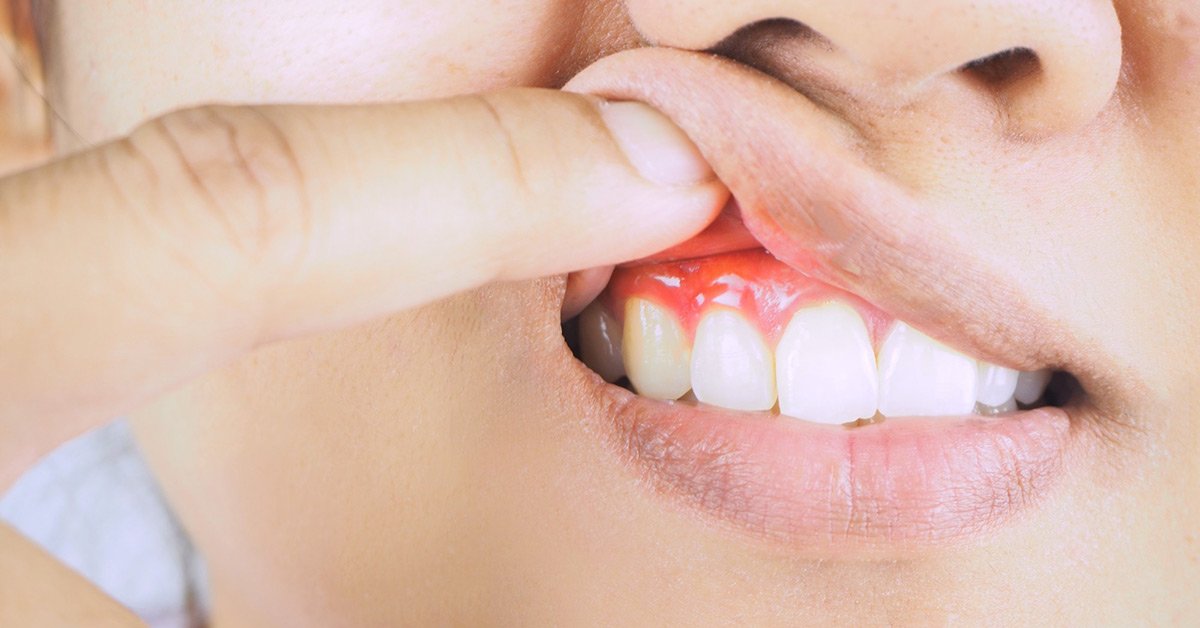
So, can you restore receding gums? The short answer is no. If you adhere to some basic dental hygiene practices, you may be able to stop gum loss. However, most cases of receding gum require a surgical procedure to restore the lost tissues.
Initially, this condition begins with the buildup of plaque between the gums and teeth. Over time, this plaque damages the gums. Advanced cases of receding gums present with pockets. Eventually, plaque and bacteria accumulate.
In this article, we will cover all the techniques that may help with fixing your receding gums.
Nightguard
Bruxism or tooth grinding is a very common condition that applies constant pressure on your teeth and gums. While this condition may not trigger bruxism, it can definitely worsen an existing case.
Wearing a night guard can absorb the pressure on your teeth and stop further gum recession.
Sleep apnea jaw repositioner
Sleep apnea is a chronic condition that often presents with bruxism. In fact, this symptom may reveal sleep apnea in many patients. Unfortunately, untreated sleep apnea could precipitate the breakage and inflammation of your gums. Eventually, this factor may contribute to the occurrence of receding gums.
Gum lengthening
Gum lengthening is a procedure that involves making a small hole within the gum using a needle. Through this tiny hole, a set of instruments is inserted to loosen the gum tissue. Expanding and sliding the gum line will cover the exposed root structure.
Adjusting the existing gum tissue to treat periodontal disease is at the core of this procedure.
Gum grafting
Once your dentist examines and assesses the state of your oral cavity, he/she may recommend gum grafting. As the name implies, this surgery involves taking a part of your gum and grafting it somewhere else.
The source of the tissue could be:
- An area next to the receding gums
- The hart palate
- Donated tissue from another person
Dental veneers, dental crowns, and fillings
Dental veneers may help with gum recession. However, it does not treat the condition directly. Initially, you may need to address the condition with gum grafting. After that, you can have dental veneers to reduce the risk of recurrences.
Dental crowns and fillings also help with keeping your oral cavity clear of harmful bacteria. This slows down the progression of periodontal disease and prevents gum recession. Similarly, these procedures will not treat gum recession if you already have it.
Think of it this way – Gum recession is a disease that affects the mucosa of the mouth. While your teeth play a role in the pathophysiology of this disease, treating them won’t directly reverse gum recession.
Clear aligners
Clear aligners can help stop gum recession. However, you need to wear the same tray for a couple of weeks to allow the periodontal ligament to adjust. After that, you can swap the old clear aligners with new ones.
Gentle toothpaste
Many toothpastes contain abrasive and irritating chemicals that damage your gums and teeth. While the injuries are typically minimal, these products may lead to considerable damage if you already have receding gums.
To stop the microscopic injuries, opt for a mild toothpaste, such as Sensodyne. Also, avoid products that contain whitening ingredients.
Soft toothbrush
Using a soft toothbrush is imperative for receding gums. Solid toothbrushes inflict damage on your gum tissues, which eventually worsens your condition.
Additionally, you need to watch out for the pressure you are using when brushing your teeth. If you notice that your toothbrush is flaring out or becoming worn down quickly, it could either mean that you are using too much pressure or the toothbrush is low quality.
Can you restore receding gums?
Gum recession creates spaces that allow sticky films of bacteria to collect and grow. The gums get pulled away from the tooth, which exposes the delicate root underneath. The complications of this condition are severe and include bone and tooth loss.
Unfortunately, the gum tissue does not regenerate similarly to other tissues. This is why receding gums do not grow back. Therefore, you are left with two solutions:
- Stop the receding gums before the damage is too extensive.
- Opt for a surgical procedure that corrects this condition.
What about natural remedies?
Above, we covered many surgical and non-surgical procedures that attempt to stop the damage of receding gums or fix the condition. However, we did not mention any natural remedies that you can find all over the internet.
Classic examples include green tea, aloe vera, and oil pulling. In reality, these natural remedies have conflicting evidence of their effectiveness for oral health. For instance, a 2009 study concluded that using sesame oil around the mouth is very effective in dampening inflammation of the gum (i.e., gingivitis) and reducing plaque formation.
With that said, the study only had 20 participants aged 16 to 18. This means that the gum recession did not have enough time to set in.
Another study inspected the potential effects of green tea on gum inflammation and oral infections. The study found that this natural remedy may potentially help with oral disease. Finally, a 2011 study showed that aloe vera gel eradicates opportunistic bacteria and dampens inflammation in the oral cavity. Once again, the study only involved 15 participants.
Another potential solution to receding gums is vitamin C. A recent study revealed that vitamin C supplements can actually slow down the progression of periodontal disease. The benefits of vitamin C for receding gums are most prominent for people who are already deficient.
Despite the available research, there is scarce evidence that natural remedies are specifically beneficial for gum recession. Keep in mind that no natural or medical treatments can grow your gums back – Only surgical procedures.
Takeaway message
Treating your receding gums is critical to stop the damage before it’s too late. The complications of gum recession are severe and should be avoided at all costs.
We hope that this article managed to highlight some evidence-based techniques that aid in the management of gum recession.
Find this helpful?…Please Like, Share and Follow @greatermood also check out our other health topics here



